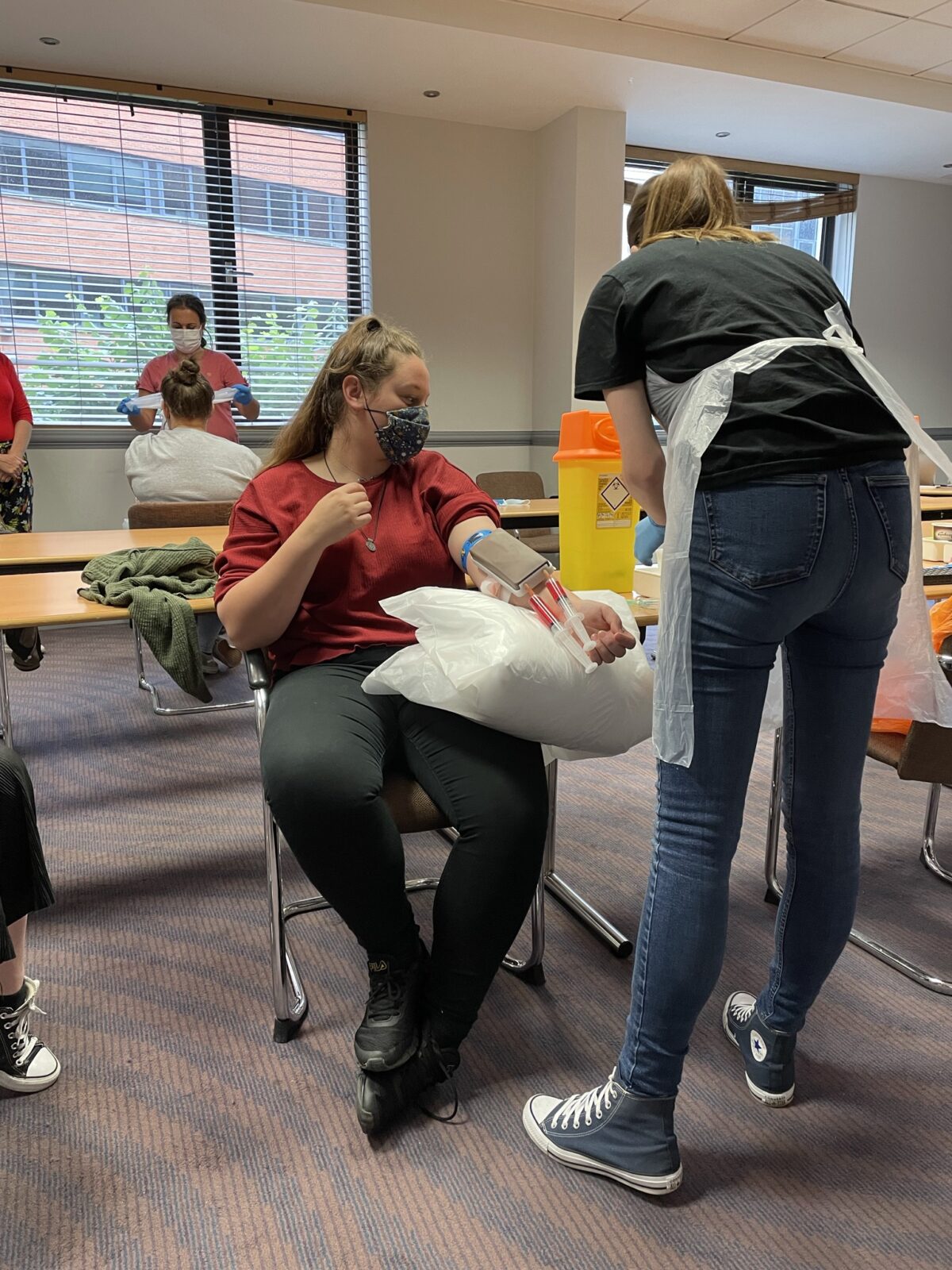What Does Northeast Medical Institute - New Haven Campus Phlebotomy Course & Cna Class Do?
What Does Northeast Medical Institute - New Haven Campus Phlebotomy Course & Cna Class Do?
Blog Article
The 5-Minute Rule for Northeast Medical Institute - New Haven Campus Phlebotomy Course & Cna Class
Table of ContentsThe 9-Second Trick For Northeast Medical Institute - New Haven Campus Phlebotomy Course & Cna ClassThe Definitive Guide to Northeast Medical Institute - New Haven Campus Phlebotomy Course & Cna ClassIndicators on Northeast Medical Institute - New Haven Campus Phlebotomy Course & Cna Class You Need To KnowIndicators on Northeast Medical Institute - New Haven Campus Phlebotomy Course & Cna Class You Should KnowThe Main Principles Of Northeast Medical Institute - New Haven Campus Phlebotomy Course & Cna Class The 9-Second Trick For Northeast Medical Institute - New Haven Campus Phlebotomy Course & Cna Class
The usage of such devices should be accompanied by various other infection prevention and control methods, and training in their use. Not all security gadgets apply to phlebotomy. Before picking a safety-engineered device, users need to extensively examine available tools to determine their ideal usage, compatibility with existing phlebotomy techniques, and effectiveness in shielding staff and individuals (12, 33).For setups with low sources, cost is a driving variable in purchase of safety-engineered tools. Where safety-engineered devices are not offered, proficient usage of a needle and syringe is appropriate.
Among the crucial markers of quality of treatment in phlebotomy is the involvement and collaboration of the client; this is equally valuable to both the wellness worker and the individual. Clear info either created or spoken need to be offered per individual that goes through phlebotomy. Annex F supplies sample text for discussing the blood-sampling procedure to a client. In the blood-sampling area for an outpatient division or center, offer a comfortable reclining couch with an arm remainder.
Getting My Northeast Medical Institute - New Haven Campus Phlebotomy Course & Cna Class To Work
Ensure that the indicators for blood tasting are plainly defined, either in a composed method or in recorded guidelines (e.g. in a laboratory form). Gather all the tools required for the procedure and place it within safe and simple reach on a tray or trolley, making certain that all the products are plainly noticeable.
Where the patient is grown-up and aware, follow the actions described below. Introduce yourself to the individual, and ask the patient to mention their full name. Check that the laboratory type matches the patient's identity (i.e. match the patient's details with the laboratory kind, to ensure accurate recognition). Ask whether the license has allergies, fears or has actually ever before collapsed throughout previous shots or blood attracts.
Make the patient comfortable in a supine position (preferably). Location a clean paper or towel under the patient's arm. Discuss the examination to be carried out (see Annex F) and acquire spoken consent. The person has a right to decline an examination any time before the blood tasting, so it is necessary to guarantee that the client has comprehended the procedure.
Some Known Details About Northeast Medical Institute - New Haven Campus Phlebotomy Course & Cna Class
Extend the individual's arm and evaluate the antecubital fossa or lower arm. Locate a capillary of an excellent dimension that is visible, straight and clear.
DO NOT put the needle where blood vessels are diverting, because this enhances the possibility of a haematoma. The capillary should be visible without applying the tourniquet. Locating the vein will aid in identifying the right dimension of needle. Apply the tourniquet about 45 finger widths over the venepuncture site and re-examine the capillary.
Specimens from central lines lug a threat of contamination or wrong laboratory examination results. It is appropriate, yet not excellent, to draw blood samplings when first presenting an in-dwelling venous tool, before linking the cannula to the intravenous liquids.
Getting The Northeast Medical Institute - New Haven Campus Phlebotomy Course & Cna Class To Work
Failure to allow adequate get in touch with time boosts the danger of contamination. DO NOT touch the cleaned up website; in particular, DO NOT place a finger over the blood vessel to lead the shaft of the subjected needle.
Ask the individual to develop a fist so the veins are a lot more noticeable. Get in the vein quickly at a 30 level angle or much less, and proceed to introduce the needle along the blood vessel at the easiest angle of access - CNA Classes. Once sufficient blood has been accumulated, launch the tourniquet BEFORE taking out the needle
The Definitive Guide to Northeast Medical Institute - New Haven Campus Phlebotomy Course & Cna Class
Withdraw the needle carefully and apply mild pressure to the site with a tidy gauze or dry cotton-wool ball. Ask the patient to hold the gauze or cotton woollen in position, with the arm expanded and elevated. Ask the client NOT to flex the arm, because doing so triggers a haematoma.

The 20-Second Trick For Northeast Medical Institute - New Haven Campus Phlebotomy Course & Cna Class
Do not press the syringe bettor since added stress enhances the danger of haemolysis. Where possible, keep the tubes in a rack and move the rack in the direction of you. Infuse downwards into the ideal coloured stopper. DO NOT get rid of the stopper due to the fact that it will certainly release the vacuum. If the sample tube does not have a rubber stopper, infuse exceptionally slowly into the tube as minimizing the pressure and velocity made use of to move the specimen reduces the risk of haemolysis.

Report this page